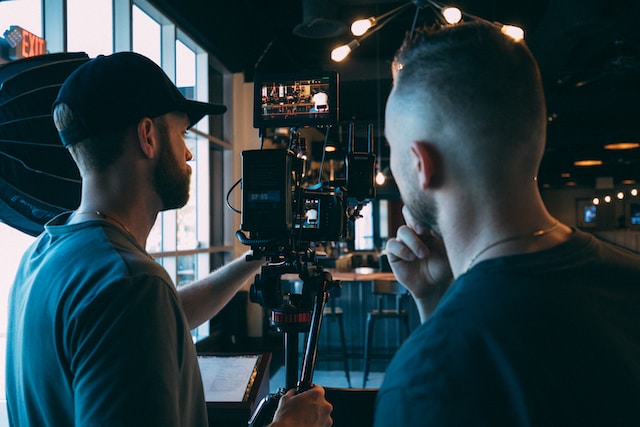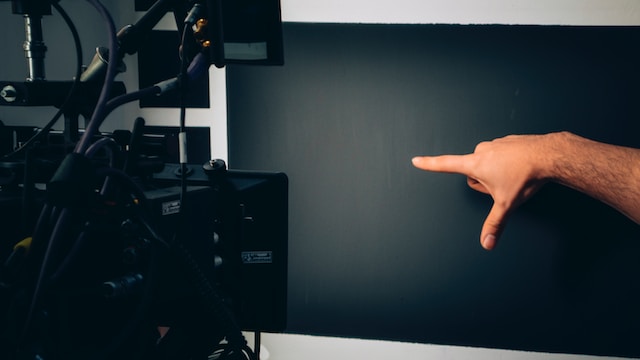A Creative Director is responsible for overseeing the entire creative process and strategy of a project, including visual and non-visual elements, while an Art Director focuses specifically on the visual aspects and design of a project. The Creative Director is more focused on the big picture and the overall message, while the Art Director is more focused on the visual details and execution.
The job responsibilities of a creative director
(Photo by KAL VISUALS on Unsplash )

A creative director is responsible for the overall direction and vision of a company’s creative output. This includes managing a team of creatives, developing concepts and campaigns, overseeing production, and ensuring that the final product meets the client’s objectives. A creative director must have strong leadership and communication skills, as well as a deep understanding of the creative process.
The job responsibilities of an art director
(Photo by Sam Moghadam Khamseh on Unsplash )

An art director is responsible for the overall look and feel of a project. They work with the creative team to come up with concepts and execute them flawlessly. An art director must have a keen eye for detail and be able to think outside the box to create unique visuals that tell a story. They also need to be able to work within strict deadlines and budgets.
The education and experience required for each position
The educational and experiential requirements for Creative Directors and Art Directors may vary depending on the industry and company they work for, but typically they both require a strong background in design, art, and visual communication.
Art Directors typically have a bachelor’s degree in graphic design, art, or a related field, and several years of experience working in a design or advertising agency. They should have a strong portfolio demonstrating their design skills and aesthetic, as well as their ability to work collaboratively with other visual artists.
Creative Directors may have a degree in design or a related field, but they often have a more diverse educational and experiential background, which may include business, marketing, or psychology. They typically have many years of experience working in the creative industry, often starting as designers or art directors before moving up to more senior positions. They should have a proven track record of leading successful creative campaigns, managing teams, and working collaboratively with other stakeholders.
Creative director Vs. Art director – Key differences
The key differences between a Creative Director and an Art Director are as follows:
Responsibilities: The main responsibility of an Art Director is to oversee the visual elements of a project, such as design, photography, and layout. A Creative Director, on the other hand, is responsible for the overall creative strategy and direction of a project, which includes visual and non-visual elements.
Scope: Art Directors typically focus on the visual execution of a project, while Creative Directors have a broader scope that includes developing the overall creative concept, messaging, and marketing strategy.
Leadership: While both positions require leadership skills, Creative Directors often have more managerial responsibilities, including leading and managing teams, overseeing budgets and timelines, and working closely with clients or stakeholders.
Experience: Art Directors usually have a background in graphic design or a related field, while Creative Directors may have a more diverse educational and experiential background, including business, marketing, or psychology.
Collaboration: Art Directors work closely with other visual artists, such as designers and photographers, while Creative Directors collaborate with stakeholders from different departments, such as marketing, sales, and product development, to ensure a cohesive creative strategy.
While Art Directors are focused on the visual execution of a project, Creative Directors are responsible for the overall success of a project, which includes the development of the creative strategy, messaging, and marketing approach.
The advantages and disadvantages of being a creative director
Advantages of Being a Creative Director:
- Leadership Role: Being a Creative Director allows you to lead and guide a team of creative professionals towards a shared vision, which can be highly rewarding.
- Creative Freedom: As a Creative Director, you have the opportunity to be involved in the creative process and contribute to the overall direction of the project, providing you with the chance to express your creativity in a meaningful way.
- High Earning Potential: Creative Directors are typically highly skilled and experienced professionals, which can lead to high earning potential, especially in larger organizations or agencies.
- Building a Strong Portfolio: Over time, Creative Directors can build a strong portfolio of successful campaigns and projects, which can enhance their professional reputation and help them advance their careers.
Disadvantages of Being a Creative Director:
- Long Hours: Creative Directors are often required to work long hours to meet deadlines and manage projects, which can lead to burnout.
- High Pressure: Creative Directors are responsible for delivering successful campaigns and projects, which can put them under a lot of pressure to meet client or stakeholder expectations.
- Balancing Creative and Managerial Roles: Creative Directors need to balance their creative and managerial responsibilities, which can be challenging, especially for those who prefer to focus on the creative side of the job.
- Decision-Making Responsibility: As a Creative Director, you are responsible for making important decisions that impact the success of a project, which can be stressful and challenging.
Being a Creative Director can be a highly rewarding career path, but it requires a combination of creative and managerial skills, as well as the ability to work well under pressure and manage a team effectively.
The advantages and disadvantages of being a art director
Advantages of Being an Art Director:
- Creative Fulfillment: Art Directors are responsible for the visual direction of a project, which can be highly fulfilling for those with a strong passion for design and art.
- Portfolio Building: As an Art Director, you have the opportunity to work on a variety of projects, which can help you build a diverse and impressive portfolio.
- Collaborative Environment: Art Directors often work in collaborative environments, which can provide opportunities to learn from and work with other creative professionals.
- High Earning Potential: Art Directors are typically highly skilled and experienced professionals, which can lead to high earning potential, especially in larger organizations or agencies.
Disadvantages of Being an Art Director:
- Tight Deadlines: Art Directors are often required to work under tight deadlines, which can be stressful and require them to work long hours.
- Pressure to Deliver: As an Art Director, you are responsible for delivering high-quality visual designs that meet client or stakeholder expectations, which can put you under a lot of pressure to perform.
- Creative Limitations: Art Directors must balance their creative vision with the project goals and objectives, which can limit their ability to fully express their creative ideas.
- Technological Advancements: As technology continues to advance, Art Directors must stay up-to-date with new design software and tools, which can require continuous learning and training.
Being an Art Director can be a highly rewarding career path for those with a strong passion for design and art. However, it also requires the ability to work well under pressure, balance creativity with project objectives, and stay up-to-date with technological advancements in the industry.








